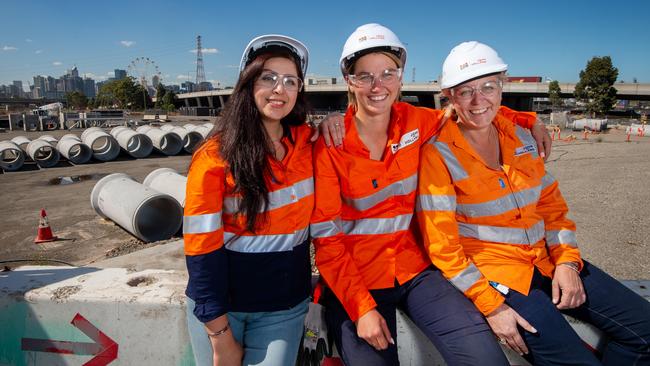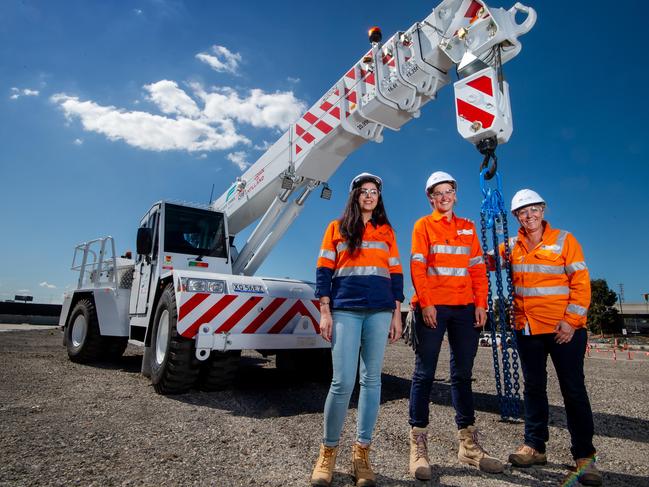More than 700 women working on construction of West Gate Tunnel
When it comes to labours of love, it doesn’t get much bigger than the $6.7 billion West Gate Tunnel and the hundreds of women building one of the biggest projects in Victorian history.

VIC News
Don't miss out on the headlines from VIC News. Followed categories will be added to My News.
When it comes to labours of love, it doesn’t get much bigger than the $6.7 billion West Gate Tunnel and the hundreds of women building one of the biggest projects in Victorian history.
CPB Contractors and John Holland have brought more than 700 women into the project’s workforce over the past 14 months and have flagged a push to keep going as they celebrate International Women’s Day.
The recruitment drive smashed the project’s initial target of 400 female staff and was spearheaded by the West Gate Women in Construction Committee.
WEST GATE TUNNEL BORERS NAMED AFTER TRAILBLAZERS
PRANKSTERS TARGET BORING NAMING COMPETITION
CITYLINK MOTORISTS FACE TEN YEAR PRICE HIKE
But committee chair Joanne Bradshaw, who is also a safety and health manager, said there was still work to be done.
“There are a lot of women in the industry but they tend to be attracted to environment roles,” she said.
“Our point of difference is moving more women into the blue-collar jobs and looking at all different types of work you can do on a site.
“In the current market, there is so much construction activity out there … the beautiful thing about these projects is you are making a difference and leaving a legacy.”

The project has also led the industry in hiring women who are seeking asylum, new migrants or living with a disability.
One of the mammoth tunnel-boring machines that will drill the tunnel was last year named after Bella Guerin, the first woman to graduate from a university in Australia.
Civil Contractors Federation Victoria chief executive John Kilgour said he hoped to see other projects follow the West Gate Tunnel’s lead.
“The industry needs to attract 7000 new workers in a variety of roles and we want at least 3500 of these to be women,” he said.
“Historically, the industry is seen as male dominated but we are now seeing a new generation of highly skilled and talented women making a valuable contribution in building the critical key infrastructure in this state.”


